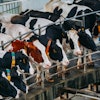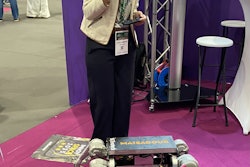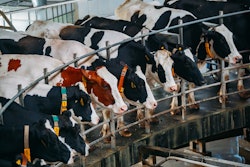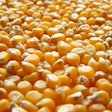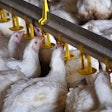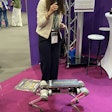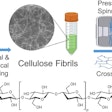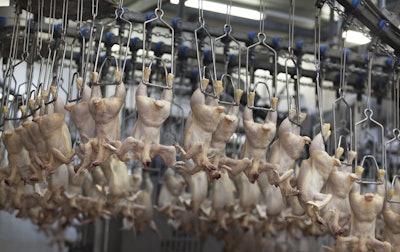
Electrostatic spraying technology could help make the disinfection of poultry processing plants more efficient.
The technology transforms one droplet of water into much smaller droplets, then applies an electrostatic charge that causes them to adhere to and wrap around poultry surfaces. This "wrap-around" effect ensures coverage on all sides of whole birds or chicken parts, including inside tiny crevices such as feather follicles.
"We take one droplet and we'll make 900 droplets out of it. So they're very, very tiny droplets. And then we put electrostatic charge on them," explained Bruce Whitting, owner and chairman, Electrostatic Spraying Systems Inc. "If you've ever taken a balloon and rubbed a balloon and stuck it on a wall, that's what we do to droplets."
At the 2025 Poultry Tech Summit, Whiting will discuss how this technology has provided major intervention breakthroughs and savings in the chicken processing industry through the efficient application of traditional disinfectants, such as PAA, but also in making new ecologically friendly antimicrobials such as bacteriophages affordable to the processing plant.
The Poultry Tech Summit, scheduled for November 3-5, 2025, at the Atlanta Airport Marriott in Atlanta, Georgia, brings together inventors, researchers, entrepreneurs, poultry industry professionals and established technology providers to discuss challenges and solutions for all aspects of the poultry supply chain.
Registration for this event is now open.
Practical for different disinfection applications
The technology addresses multiple challenges facing poultry processors. Some operations face municipal water restrictions and need to dramatically reduce water consumption. Others are working to achieve Category 1 status to meet requirements for major buyers.
Additionally, some processors want to transition to more organic or natural antimicrobials, such as bacteriophages, but cannot afford to waste expensive products through traditional spray methods.
Traditional 300-micron droplets typically hit surfaces and run off, while the much smaller droplets created by electrostatic spraying can penetrate openings as small as 60 to 80 microns, such as feather follicle holes, providing coverage where pathogens can hide.
Operators have a choice of two different patented technologies depending on the application. One technology delivers higher liquid volume for whole birds, while another provides a lighter, more directed spray for chicken parts like thighs, legs and breasts.
Attend the 2025 Poultry Tech Summit
The Poultry Tech Summit will return as an in-person event on November 3-5, 2025, at the Atlanta Airport Marriott in Atlanta, Georgia. The Poultry Tech Summit brings together inventors, researchers, entrepreneurs, poultry industry professionals and established technology providers to discuss challenges and solutions for all aspects of the poultry supply chain. The event focuses on the transition of innovative technologies from researchers and entrepreneurs into commercial applications for the benefit of the poultry industry.
NEW in 2025, Poultry Tech Summit will be held in collaboration with the U.S. Roundtable for Sustainable Poultry and Eggs (US-RSPE) annual meeting held November 5, 2025.
Registration for the 2025 Poultry Tech Summit is now open. For more information, go to www.poultrytechsummit.com.

